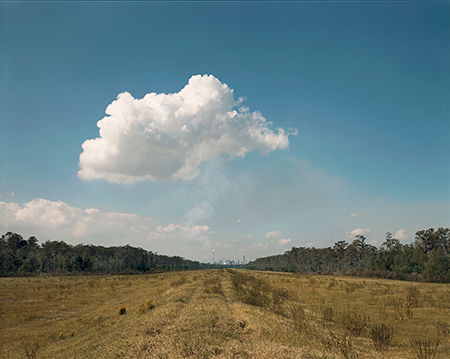
Continuing through December 19, 2014
Organized by the Aperture Foundation, the traveling exhibition "Petrochemical America" reveals, bit by bit through a series of large scale photographs and elegantly designed visual narratives, the insidious grip of the petrochemical industry over nearly every aspect of contemporary society. The project, a collaboration between noted photographer Richard Misrach and Manhattan-based landscape architect Kate Orff, identifies itself as an artifact of the petroleum economy it implicates. In illustrating the inescapable presence of petrochemicals, the exhibition acknowledgments disclose the use of chemicals necessary in every step of the exhibition, from Misrach’s photographic process to Orff’s smartly designed graphic substrates and a hanging Plexiglas display — a substitute for the traditional glass vitrine — that deftly offers a view into the planning and creation of the exhibition.
Misrach’s immersive photographs, taken along the waterways and the communities around the Mississippi River, range from documentary to moody and foreboding. Some, like "Hazardous Waste Containment Site, Dow Chemical Corporation, Mississippi River, Plaquemine, Louisiana," evoke scenes from Andrei Tarkovsky’s 1979 film, “Stalker,” which was filmed at an abandoned hydroelectric plant downstream from a chemical factory. Orff’s graphics demonstrate, with cumulative effect, the pervasiveness of petroleum as it cycles through our water, soil and food chain. The final blow falls with the dawning realization of the global effect. A stylized world map, littered with Orff’s icons representing various oil refineries, chemical effluents and industrial waste products reveals concentrations of carcinogens and environmental threats on every continent and every coastline.
